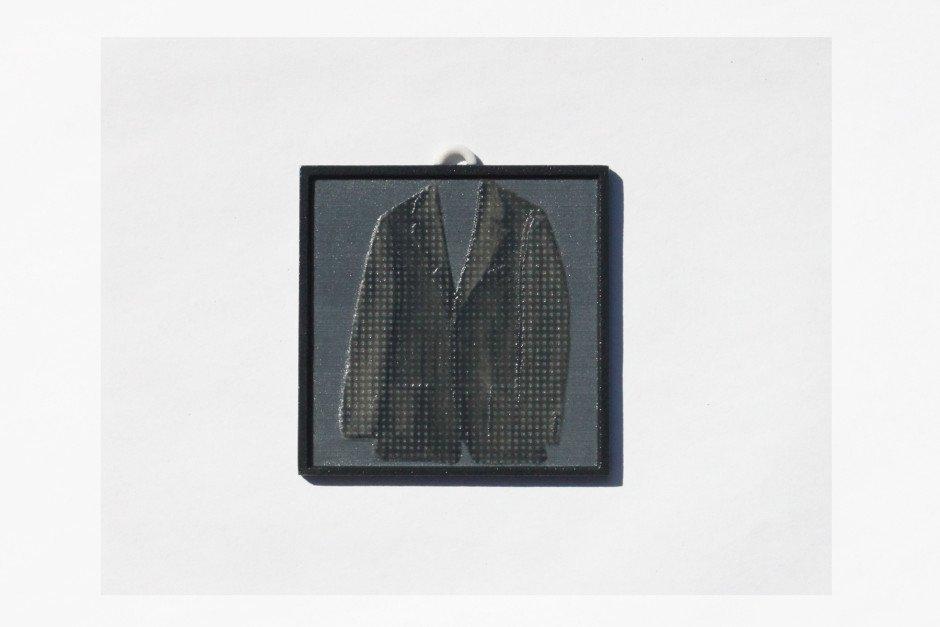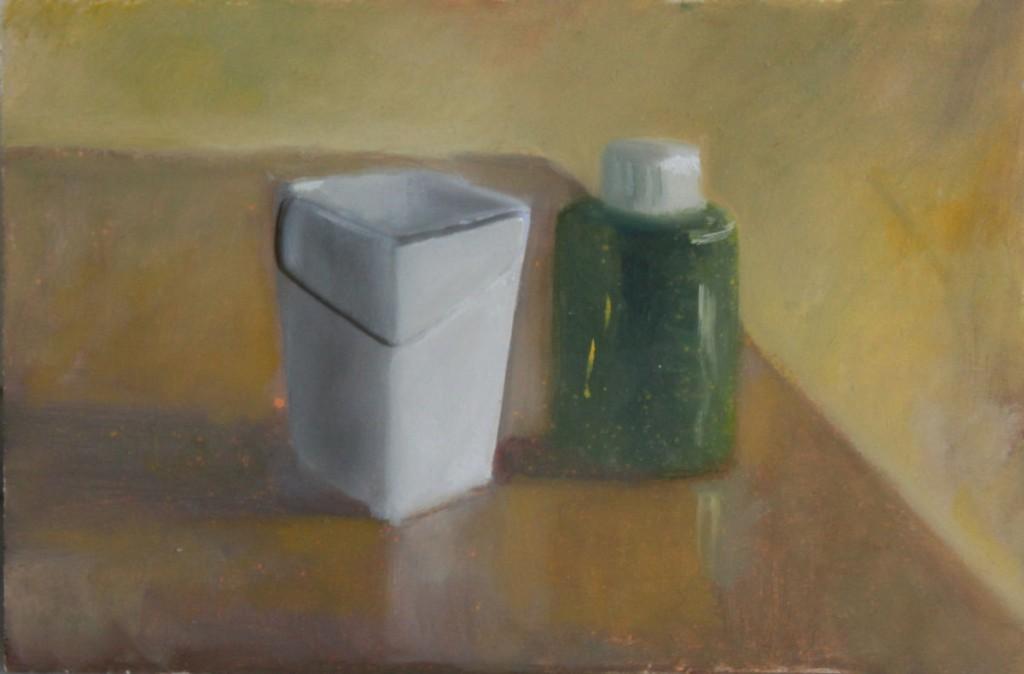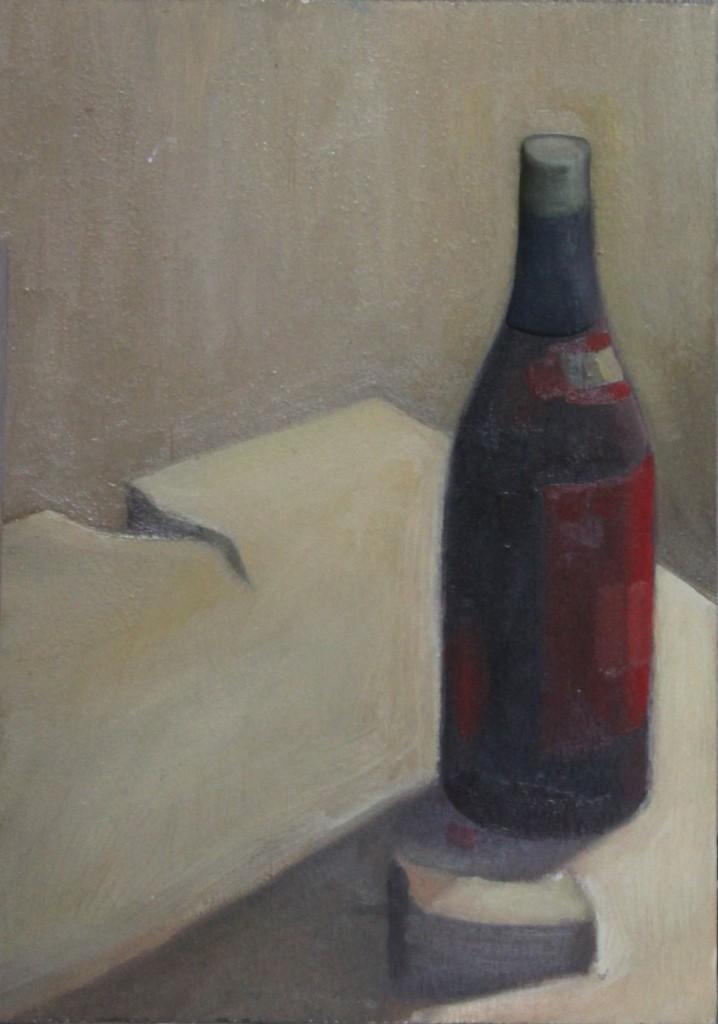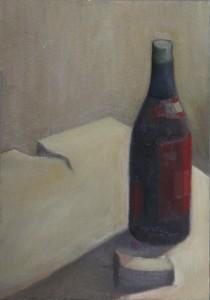 As painting is a largely visual medium, the key to promoting your work lies in being able to get people to look at it. And this has to be more than just a passing glance. In an effort to catch and hold that attention, Italian artist Guido Salimbeni has been combining 3D printed elements with traditional oil painting techniques. In an interview with 3Dprint.com, he described his thoughts behind using this combination of techniques:
As painting is a largely visual medium, the key to promoting your work lies in being able to get people to look at it. And this has to be more than just a passing glance. In an effort to catch and hold that attention, Italian artist Guido Salimbeni has been combining 3D printed elements with traditional oil painting techniques. In an interview with 3Dprint.com, he described his thoughts behind using this combination of techniques:
“One of the main focus of artists for all of history as been to keep the viewers’ attention focused on their painting as long as possible. If the artist’s painting is inside an exhibition along with other paintings, certainly the artist would be pleased to find a way to make her/his painting stand out. Colors, shapes, composition, design, subject, material, and surface all have an influence on the final look of the painting, how it will react to the light, and how it will show through the light to the eyes of the viewer. 3D printing technology has made adding this additional layer of complexity in the painting quite an easy task.”
 Salimbeni sees himself as following in the footsteps of a long line of great masters, albeit with a unique technological opportunity presented to him. Tracing the history of painterly depiction in 3D to ancient bas relief work and on through Rembrandt, he sees the use of applied 3D printed elements as an opportunity to create a more dynamic canvas.
Salimbeni sees himself as following in the footsteps of a long line of great masters, albeit with a unique technological opportunity presented to him. Tracing the history of painterly depiction in 3D to ancient bas relief work and on through Rembrandt, he sees the use of applied 3D printed elements as an opportunity to create a more dynamic canvas.
“Rembrandt, one of the greatest painters of all time used to paint the strongest highlights in his works with very thick, opaque paint, often of lead white. Sometimes he would even add a layer of gold leaf on top of the thick paint. Modern artists have combined sculpted elements with painting in order to create the impression that the painting changes shape depending on the location of the viewer,” Salimbeni explains. “I have taken the opportunity presented through 3D printing and brought it into my paintings.”
 His paintings begin in a traditional enough manner. He begins first by sketching and doing studies of forms and composition. The rest of his process moves back and forth between traditional painting and 3D design. As he develops more fully finished preparatory drawings, he also works with 3D software. Working on a prepared canvas, he then begins with the underpainting then builds up thin layers of opaque paint that partly obscure and partly reveal the painting beneath.
His paintings begin in a traditional enough manner. He begins first by sketching and doing studies of forms and composition. The rest of his process moves back and forth between traditional painting and 3D design. As he develops more fully finished preparatory drawings, he also works with 3D software. Working on a prepared canvas, he then begins with the underpainting then builds up thin layers of opaque paint that partly obscure and partly reveal the painting beneath.
Returning to his 3D software, he then creates a final model to print in sandstone, resin, or plastic through Shapeways or i.materialise. Once the 3D element arrives, it is prepared and then glued directly onto the canvas–the effect of which is a subtle change in the way that the light interacts with the surface of the canvas, just enough to draw the viewer at least into taking a second look if not more. The building up of layers allows him to grade the 3D printed portions back into the 2-dimensional in a more subtle fashion.
 The key question here is whether these paintings are merely novelties or whether the effect truly does grab and hold your attention while also stimulating an intellectual/emotional response. While there is no doubt that Salimbeni is a talented artist and that he is exploring an area that is on the frontier of contemporary technique, it will be the development of his body of work over time that determines its contribution to the integration of 3D printing and painting. If it is no more than a trick, there will be no need to look at more than one painting and have a bit of surprise. If, however, he continues to explore the relationship between the 3D and the 2D in such a way that we continue to discover new ideas in his work, well, that would certainly hold this viewer’s attention.
The key question here is whether these paintings are merely novelties or whether the effect truly does grab and hold your attention while also stimulating an intellectual/emotional response. While there is no doubt that Salimbeni is a talented artist and that he is exploring an area that is on the frontier of contemporary technique, it will be the development of his body of work over time that determines its contribution to the integration of 3D printing and painting. If it is no more than a trick, there will be no need to look at more than one painting and have a bit of surprise. If, however, he continues to explore the relationship between the 3D and the 2D in such a way that we continue to discover new ideas in his work, well, that would certainly hold this viewer’s attention.
Let us know your thoughts on this artist’s technique in the 2D and 3D Art from Guido Salimbeni forum thread over at 3DPB.com.
Subscribe to Our Email Newsletter
Stay up-to-date on all the latest news from the 3D printing industry and receive information and offers from third party vendors.
You May Also Like
Profiling a Construction 3D Printing Pioneer: US Army Corps of Engineers’ Megan Kreiger
The world of construction 3D printing is still so new that the true experts can probably be counted on two hands. Among them is Megan Kreiger, Portfolio Manager of Additive...
US Army Corps of Engineers Taps Lincoln Electric & Eaton for Largest 3D Printed US Civil Works Part
The Soo Locks sit on the US-Canadian border, enabling maritime travel between Lake Superior and Lake Huron, from which ships can reach the rest of the Great Lakes. Crafts carrying...
Construction 3D Printing CEO Reflects on Being Female in Construction
Natalie Wadley, CEO of ChangeMaker3D, could hear the words of her daughter sitting next to her resounding in her head. “Mum, MUM, you’ve won!” Wadley had just won the prestigious...
1Print to Commercialize 3D Printed Coastal Resilience Solutions
1Print, a company that specializes in deploying additive construction (AC) for infrastructure projects, has entered an agreement with the University of Miami (UM) to accelerate commercialization of the SEAHIVE shoreline...

































